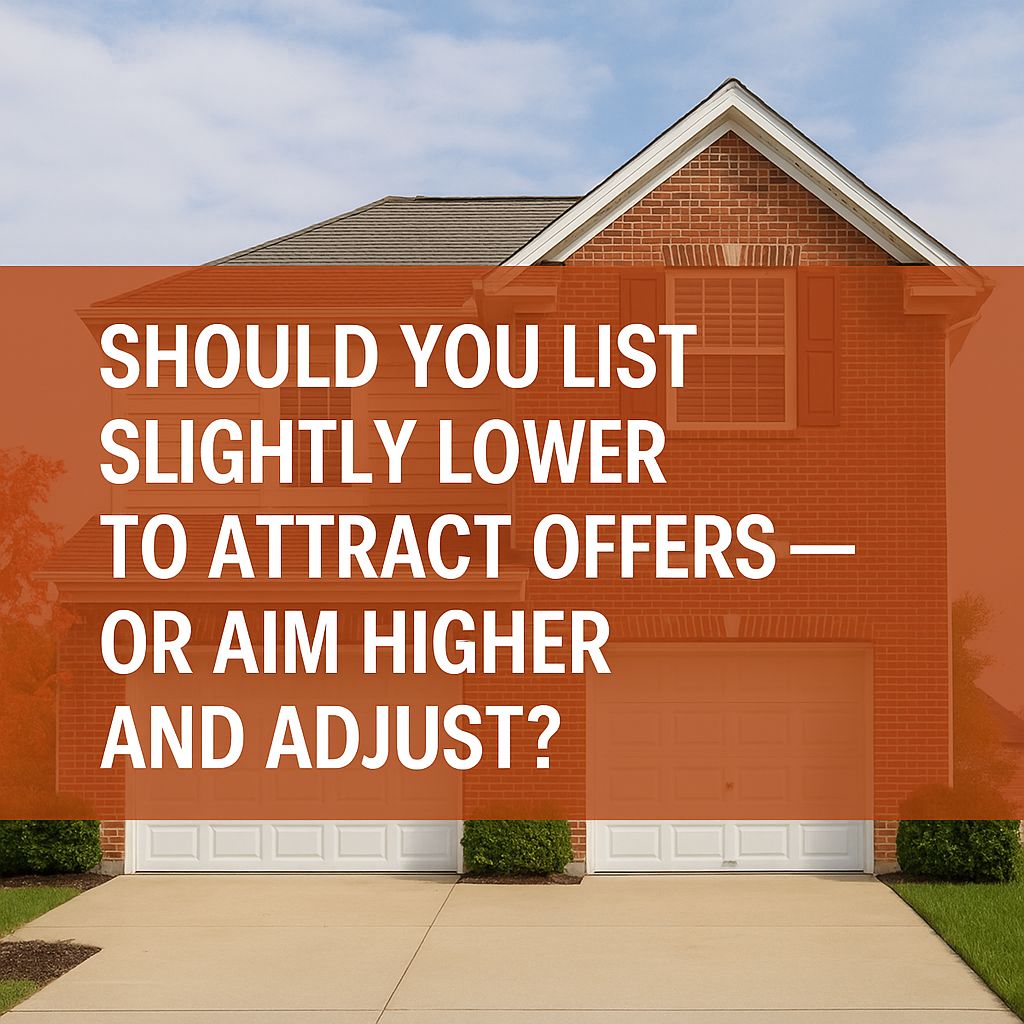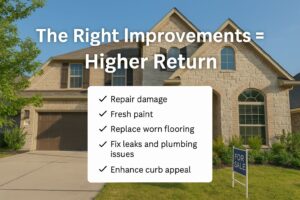Every seller in Houston asks it: “Should I price high and test the market, or start a little lower to attract more offers?”
It’s one of the hardest calls to make, especially right now. You’ve probably seen it firsthand when your neighbor’s house sold in two weeks, but the one down the street has been sitting for months.
The truth? Pricing strategy matters more in 2025 than it has in years.
And in a balanced market like Houston’s, the right pricing decision can be the difference between fast offers and slow, stressful adjustments.
Let’s look at what’s really happening and how to price smart from day one.
The Market Has Shifted. And So Have Buyer Habits.
Houston isn’t in a “hot” market anymore; it’s in a balanced one. That means buyers have time to think, compare, and negotiate.
Here’s the data behind that shift:
- Inventory: Around 5.0–5.5 months of supply (up from roughly 4.3 last year).
- Average Days on Market: About 50–55 days, nearly double what we saw in 2022.
- Median Sale Price: Hovering near $347,000, up about 5% year-over-year
- Buyer Behavior: More listings = more choice. Today’s buyers scroll, compare, and pass over anything that doesn’t feel “worth it.”
Put simply: homes that feel fairly priced are selling quickly. Homes that feel ambitious are getting overlooked, and eventually discounted.
Option 1: List Slightly Lower (or Right at Market Value)
This strategy isn’t about “discounting” your home; it’s about showing value early and sparking real buyer energy.
Here’s Why It Works
- First impressions matter most: Roughly 80% of all buyer activity happens within the first 10 days of listing.
- Higher visibility online: A home listed at $399,900 appears in both “up to $400K” and “$350K–$400K” searches. A home at $405,000 doesn’t. That one small change can double your reach.
- Faster offers, stronger leverage: Homes priced at or slightly under market value sell about 18 days faster and often at or above asking price.
- Better perception: Buyers today know the market. A well-priced home feels fair — not desperate — and builds trust.
Houston Example
A Westbury home listed at $445,000 (market supported $450K–$460K) drew 12 showings in week one and two full-price offers. A similar home nearby listed at $475,000 took 60 days and two price cuts to sell for $450,000.
That’s the power of momentum.
Option 2: Aim High and Adjust Later
This is the traditional approach: “Let’s list high and leave room to negotiate.” It feels safe, but in Houston’s current market, it often backfires.
What the Data Shows
- In 2025, 1 in 3 Houston listings has a price drop after 30+ days on the market, per the HAR MLS Trends Report.
- Nationally, Redfin’s Price Drop Tracker reports that a record share of listings required reductions this summer, with the average U.S. home ultimately selling 3.8–4% below original list price.
- Zillow’s Pricing Strategy Study found that overpriced homes take 45% longer to sell and close for less than accurately priced homes.
- Locally, HAR data confirms that the longer a home sits, the lower the eventual sale-to-list ratio.
Why It Hurts
- You lose the first wave. Buyers who would’ve been interested early never see your listing again.
- Stale perception sets in. After 30+ days, buyers assume something’s wrong.
- You end up cutting deeper later. Each price drop must be larger to regain attention.
Listing high can feel good, but in practice, it often means hunting for buyers later.
The Psychology of Pricing (and How Buyers Actually Think)
Buyers don’t price homes by logic alone. They price by feeling. They scroll through dozens of listings, side by side. And they’re not asking, “What’s this worth?” They’re asking, “Does this look like a good deal?”
Here’s what happens:
- A well-priced home feels “safe” to offer on.
- An overpriced home triggers skepticism or fatigue (“Let’s wait — they’ll drop the price”).
- A lower starting price often creates competition, leading to higher net proceeds.
And remember: the first offer you receive is usually the best one. Redfin’s data shows that homes attracting early offers still sell closer to list price than those that linger.
What the Numbers Say — Listing Price vs. Sale Price
| Metric | Priced Right / Slightly Under | Priced High / Adjust Later |
| Average Days on Market | 25–30 days | 55–65 days |
| % of List Price Received | 99–101% | 95–97% |
| Likelihood of Price Cut | ~14% | ~34% |
| Sale-to-List Price Gap | +0.5% | –3.8% |
(Sources: HAR Market Update September 2025, Redfin U.S. Housing Market Overview, Zillow Research)
The takeaway: homes priced right from the start net more in the end.
When It’s Okay to Aim a Bit Higher
Not every home should play the same strategy. If you own something truly unique – a corner lot, premium view, architectural distinction, or rare floor plan – you may justify a small premium.
The key is to keep it modest (1–2% above top comp) and define a fast Day-10 check-in to pivot if needed. Confidence is good, but stubbornness is expensive.
The Main Takeaway: Momentum Wins in Houston’s Market
In 2025, Houston sellers who launch right with a priced smart, marketed beautifully, and ready from day one home still see strong demand and quick sales. The ones who “test high” tend to chase price reductions and watch leverage slip away.
Momentum beats perfection.
You don’t need to guess your number. You need a strategy that gives you feedback and flexibility.
Ready to Price Your Home with Confidence?
Let’s build your personalized Pricing & Day-10 Review Plan so you can launch your home with confidence and sell it for what it’s truly worth. Because in Houston real estate, it’s not about who lists highest; it’s about who lists right.
If you have any questions, don’t hesitate to contact your concierge at (281)781-4348, or visit us at Simien Properties.
Sources:







